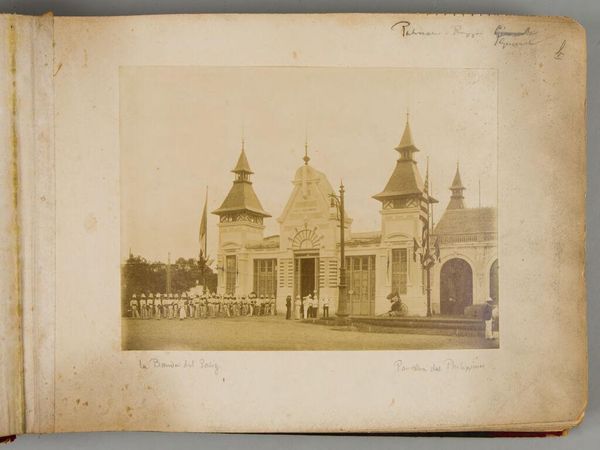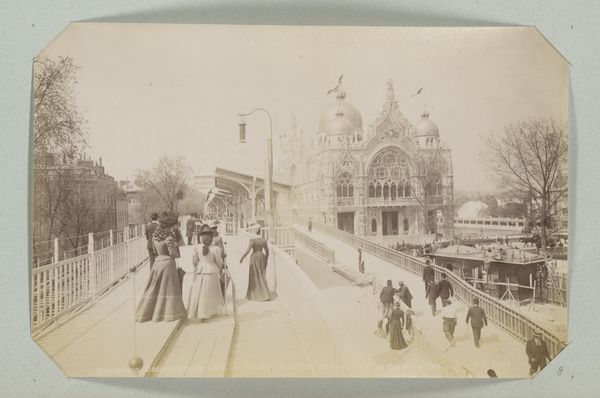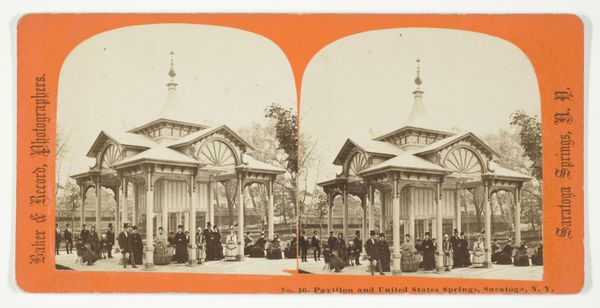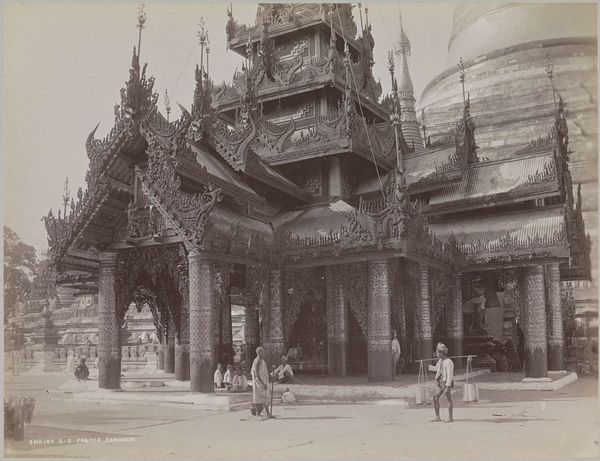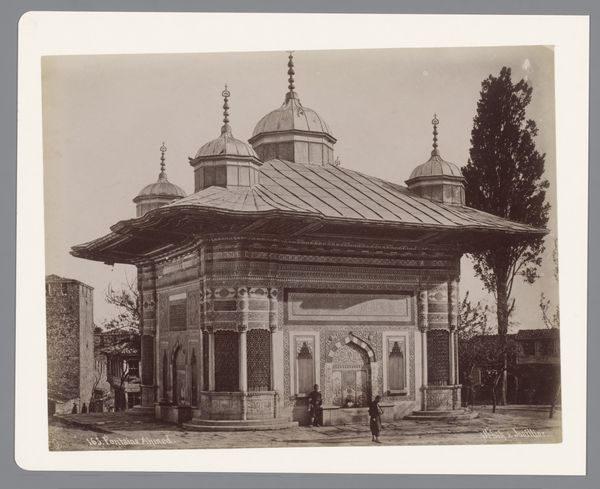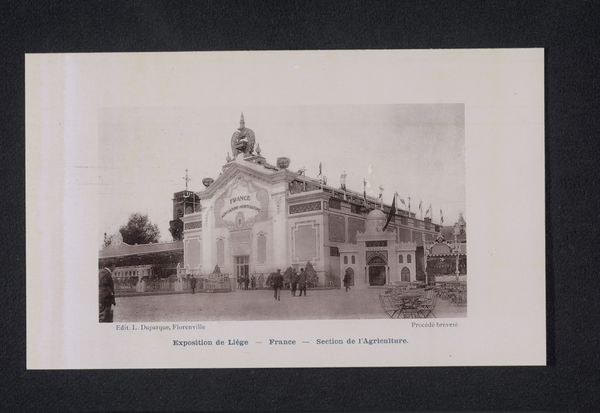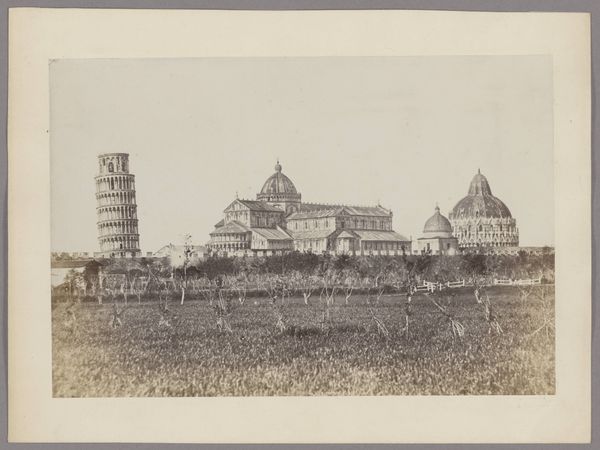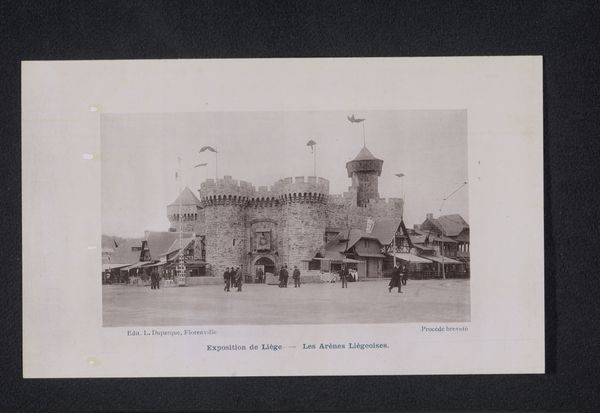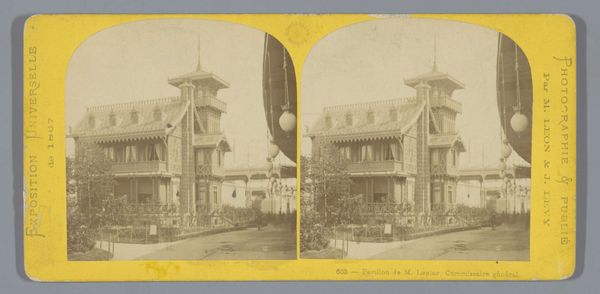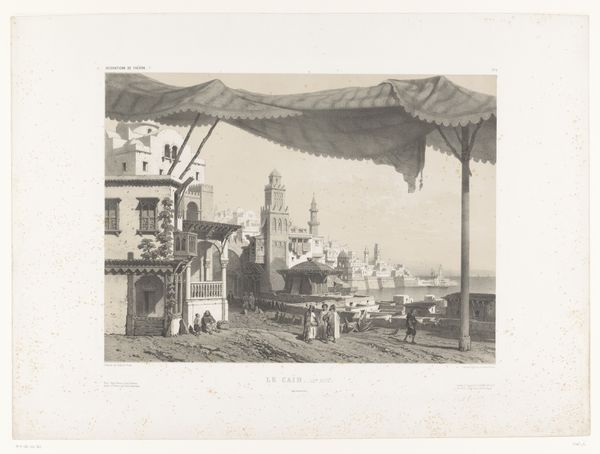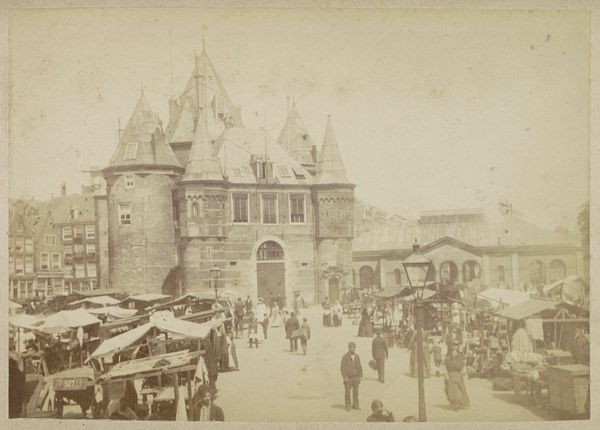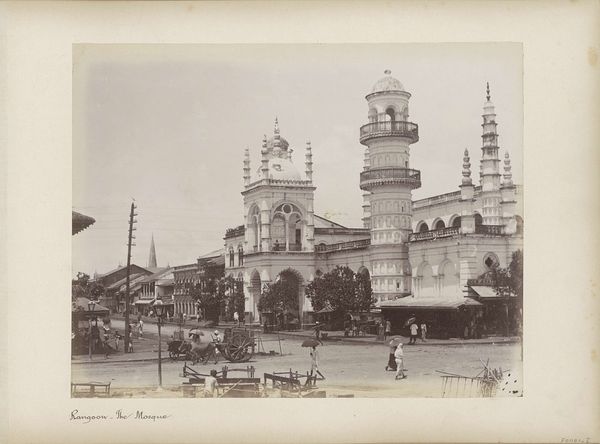
photography
#
photography
#
orientalism
#
cityscape
Dimensions: height 77 mm, width 112 mm
Copyright: Rijks Museum: Open Domain
Curator: Welcome. We are standing before "Overdekte marktstallen in Nizhniy Novgorod," a photograph captured between 1903 and 1904. It is now housed in the Rijksmuseum collection. Editor: Immediately, I'm struck by the almost ghostly, sepia-toned light. It imbues the scene with a subdued, almost melancholic atmosphere, and this sense of a captured moment in time. Curator: Precisely. It speaks to a period of rapid industrialization and societal transformation in Russia. Consider Nizhny Novgorod’s pivotal role as a trading hub, where various cultures intersected. The photo could invite reflection on social stratification and the experiences of marginalized communities, or of the position of women present in this scene. Editor: I appreciate the way the photographer used light and shadow to articulate the architecture of these market stalls. Note how the intricate wooden structures with their decorative elements become prominent through this contrast. Curator: Yes, and it’s important to address the theme of orientalism evident here, inviting us to critique the way Western photographers, in this case Joseph Cheetham, visually constructed and perhaps exoticized Eastern spaces for Western consumption. What does it mean to view another culture as inherently different, mysterious? Editor: From a purely formal standpoint, observe the receding lines, the perspective creating depth that draws the eye through the frame. Curator: I wonder what this photo tells us about the labor practices of the time or the availability of consumer goods? Also, what assumptions are made about Russian culture, considering Cheetham's likely background as a British photographer documenting the Russian empire? Editor: True. While it visually offers symmetry and careful composition that speaks volumes to its structural elements, your points regarding the historical context surrounding its creation is paramount. Curator: These photographs give us an entryway into a complex past. Editor: Absolutely. It showcases the power of the photograph as a preserved slice of existence while beckoning the need to dissect what is really unfolding within its constraints.
Comments
No comments
Be the first to comment and join the conversation on the ultimate creative platform.
